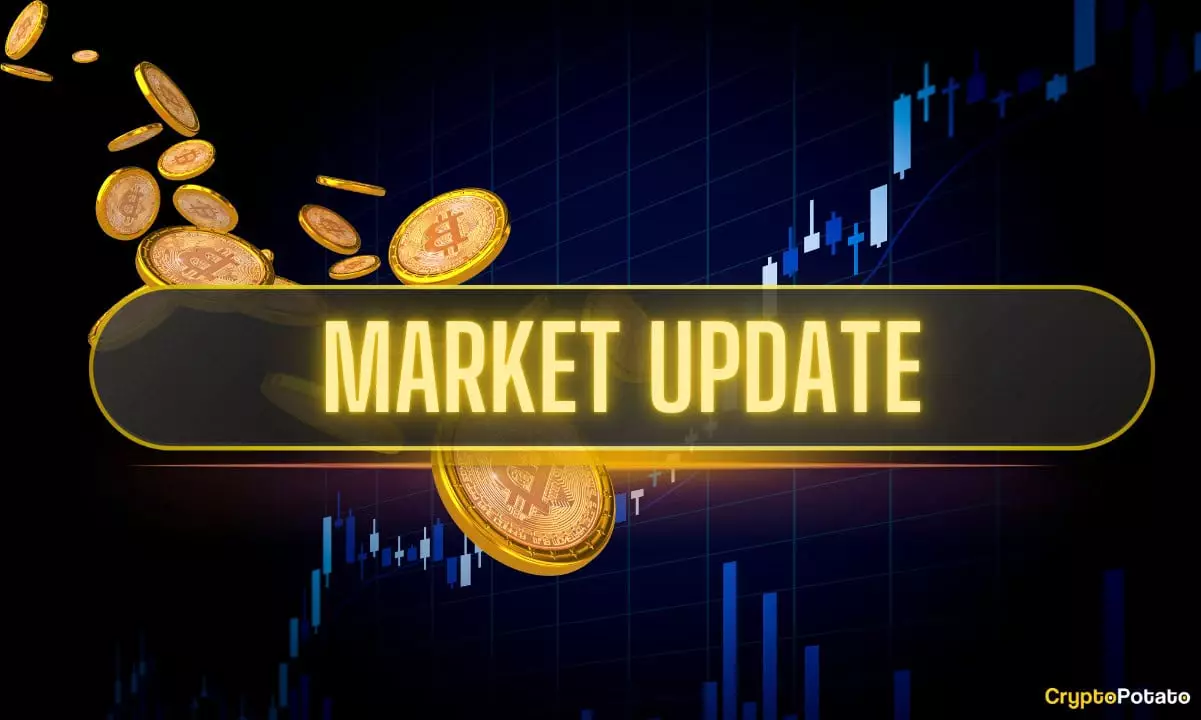This week’s extraordinary rise of Bitcoin and other cryptocurrencies defies the typical narratives of market stability and rational investor behavior. For months, seasoned observers have watched the crypto space with cautious optimism, expecting consolidation or even downturns amid global economic uncertainties and geopolitical tensions. Yet, what we are witnessing now isn’t just a market correction or an ordinary bull run; it’s a seismic shift that reveals systemic resilience and the underestimated influence of major players. This isn’t mere speculation; it’s a strategic recalibration that could reshape the landscape for years to come. The question remains: Is this rally genuinely organic, or is it a carefully orchestrated move by institutional giants seeking to position themselves at the forefront of the new financial order?
A Market in Disguise: Whales and Institutions Holding the Reins
In the last few days, reports have surfaced indicating that dormant whales—those hefty investors who hold large quantities of Bitcoin—are waking up from their slumber, injecting new momentum into the market. Interestingly, retail investors remain conspicuously absent from the current surge, which instead appears driven by institutional entities, hedge funds, and prominent crypto custodians. These influential actors seem to recognize the strategic advantage of accumulating when prices are subdued, transforming the recent sideways movement into a prelude for a powerful breakout. The narrative that retail will lead the charge is being challenged; instead, this appears to be a calculated effort by the financial elite to control the next phase of growth, ensuring that the rise is sustainable and not just fleeting speculation.
Global Geopolitical Tensions and Market Responses
One might think geopolitical tensions and tariff threats from the U.S. would weigh down the market, but paradoxically, they seem to have acted as catalysts for the opposite effect. With substantial tariffs imposed on Canada, Europe, and Asia, traditional markets are becoming increasingly volatile and unpredictable. In this climate, cryptocurrencies emerge as a haven for the savvy investor—an asset class perceived as alternative yet strategically relevant in a global economy marked by escalating tariffs and sanctions. This dichotomy illustrates the growing center-right view that cryptocurrencies, despite their volatility, offer a hedge against governmental overreach and economic uncertainty—an asset that, if harnessed properly, could enhance national resilience and economic independence.
Altcoins Riding the Wave: Diversification or Overreach?
While Bitcoin’s weekly gains surpass 8%, altcoins have exhibited even more impressive performances, some setting new records. Ethereum soared by 17%, XRP by 20%, and ADA by a staggering 30%. These figures reveal an emerging ecosystem where innovation and strategic investments in blockchain technology are paying off. Critics might dismiss these gains as speculative bubbles, but a center-right perspective emphasizes the importance of a diversified portfolio—investing in technological infrastructure and regional champions like XRP or ADA not only spreads risk but also fosters national innovation. Yet, one must remain cautious: an overreliance on altcoins could invite volatility and manipulation, especially if driven by herd mentality rather than genuine utility and institutional backing.
The Institutional Stamp of Approval: BNY Mellon and BlackRock’s Bet
One of the most telling signs of shifting tides is the entry of venerable institutions like BNY Mellon and BlackRock into the crypto arena. BNY Mellon will serve as a custodian for Ripple’s USD-backed stablecoin, RLUSD, marking a significant milestone in mainstream acceptance. Similarly, BlackRock’s record inflow into Ethereum ETFs demonstrates confidence in the technology’s long-term potential. These moves are not accidental but strategic steps by institutions that recognize the transformative potential of digital assets. They aim to appoint themselves as trusted guardians of the new economy, which aligns with a center-right liberal view that favors innovation balanced with regulatory oversight—promoting growth without unchecked risk.
Market**Dynamics: A Mix of Optimism and Caution
Despite the bullish surge, vulnerabilities remain. The recent exploit where a hacker returned stolen assets after a bounty offer reflects the ongoing security challenges in the crypto space. Additionally, the dominance of Bitcoin slightly waned as altcoins flourished, which suggests a shifting landscape but also entails risks of fragmentation. The high inflows into Ethereum ETFs and the solid performance of tokens like HYPE signal investor confidence, but it’s crucial to question whether this momentum is sustainable or vulnerable to external shocks. From a centrist-liberal stance, fostering innovation while implementing robust security and oversight measures is paramount to ensuring this growth benefits society as a whole—not just early investors or institutional giants.
### Final Reflections
This week’s market developments underscore a broader, more complex truth: cryptocurrencies are no longer fringe assets but integral to modern financial strategies. Their resilience amid geopolitical turbulence, institutional embrace, and technological innovation speak volumes about their rising influence. Still, skeptics and critics remain justified in their wariness, warning against unchecked speculation and potential manipulation. As a center-right liberal observer, I believe the future of crypto hinges on balanced regulation, prudent investment, and fostering innovation that serves national interests. The current rally might be a sign of systemic change rather than randomness—a harbinger of a new financial paradigm that, if guided wisely, could strengthen economic sovereignty and global influence for many years.

